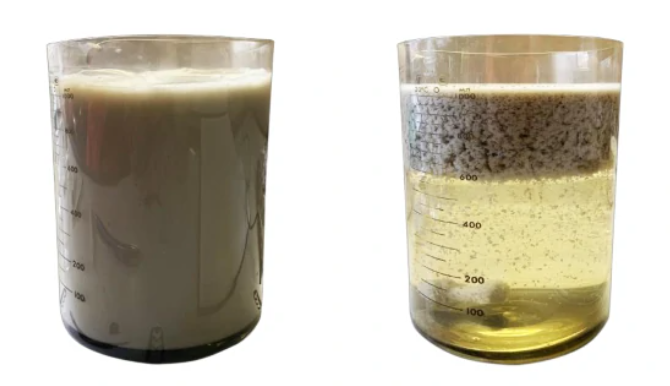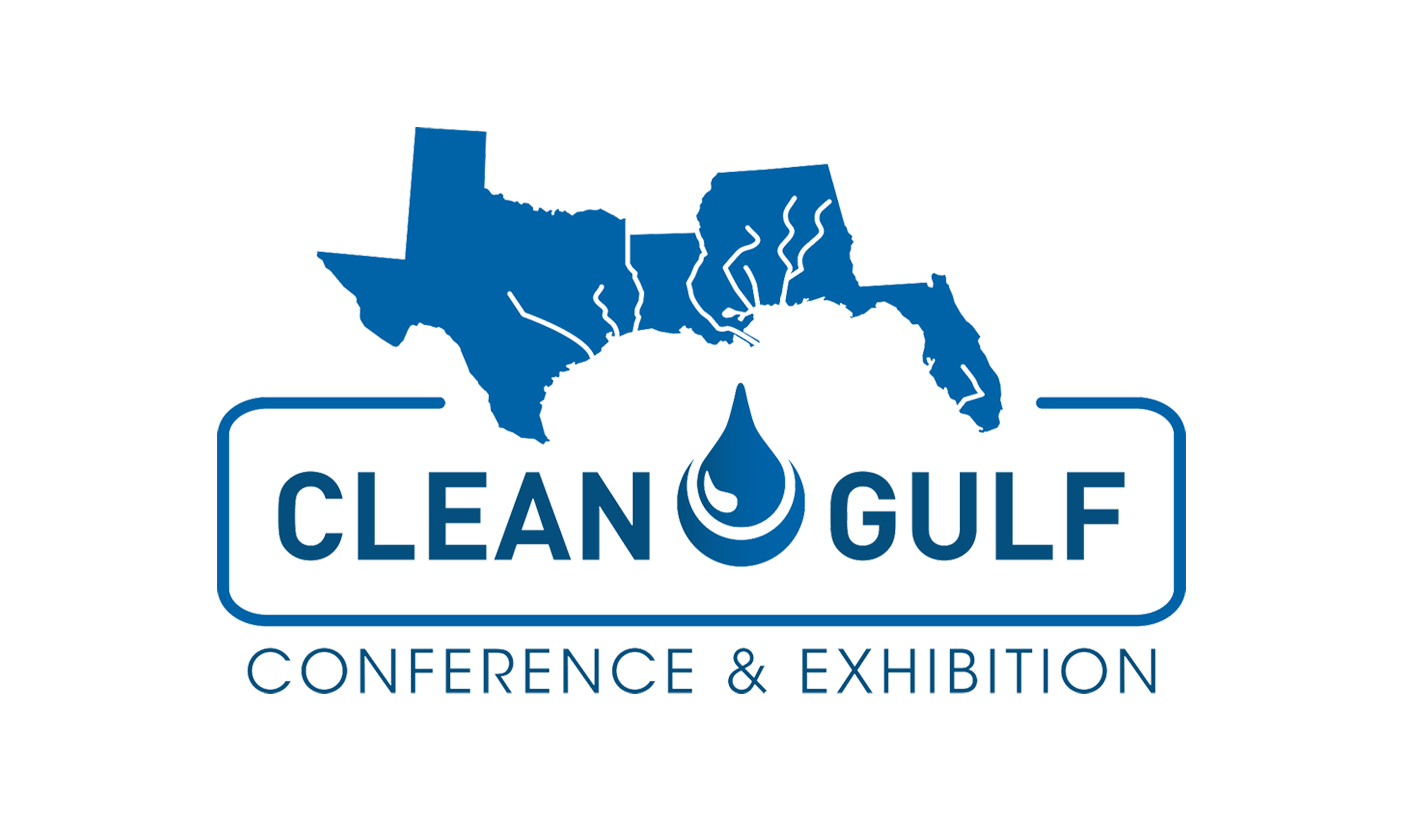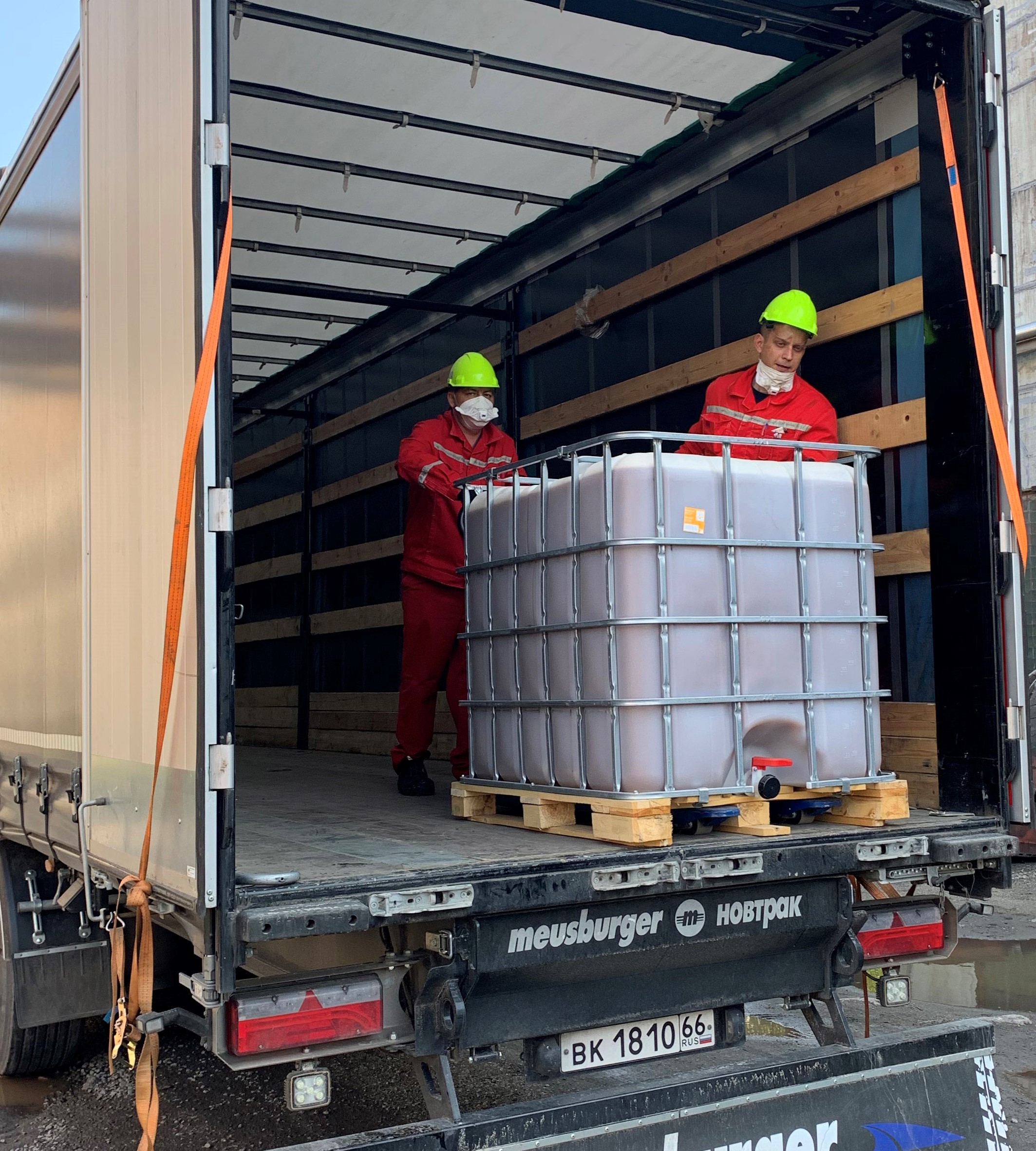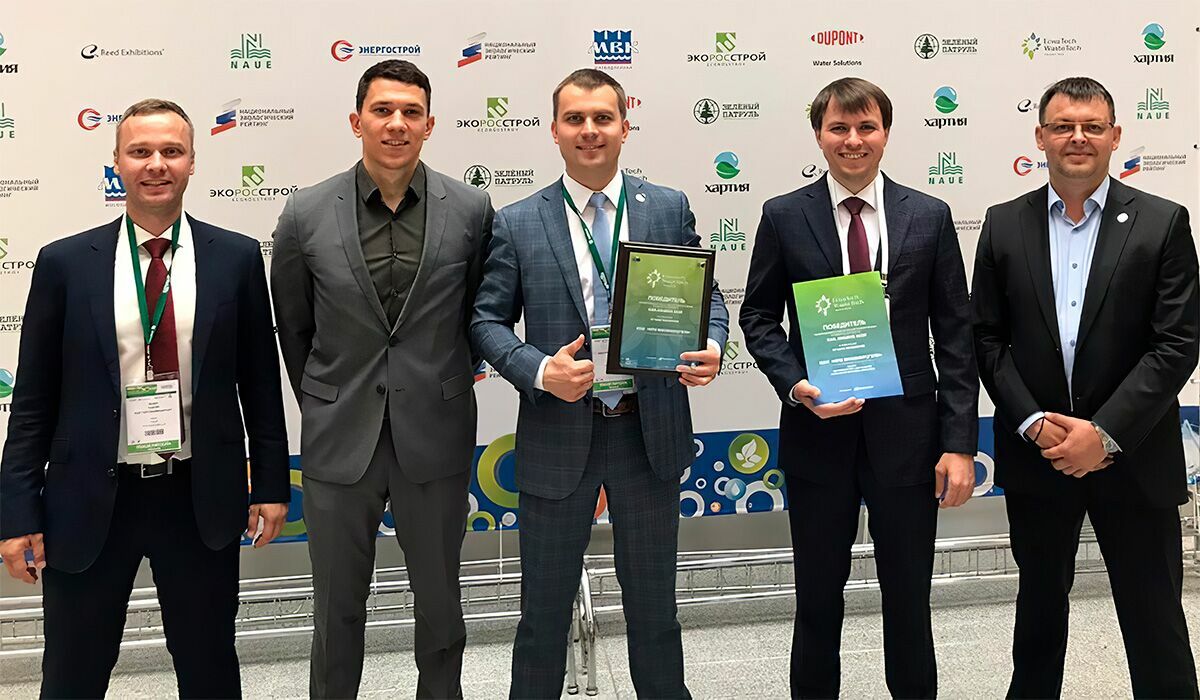Recycling coolant: how to reduce costs and avoid fines
Wherever there are machines and mechanisms, waste coolant accumulates. This emulsion contains hazardous substances, so it must be decontaminated and disposed of. Proper disposal requires an investment, but illegal dumping of hazardous waste is also subject to fines. Let's look at how to save money on disposal of used coolants and not get fined.
What is used coolant, where and in what volumes it is accumulated?
Coolants are compositions to protect metal from oxidation, reduce friction, and reduce temperature. In metalworking, they cool the tool and the metal it drills, grinds, or cuts. In mechanical engineering, coolants are poured into engines, transmissions, and bearings. It helps to protect parts and tools from wear and, in the case of metalworking, also helps to reduce the percentage of rejects in the finished products.
During operation, swarf, dust, other substances and other waste products get into the cooling lubricant. It loses its properties and is considered "used". Used coolant is replaced with a new one.
Any enterprise, which has machines and mechanisms, uses cooling and lubricating liquids, which means they have used-up coolant. Machine building and metallurgy produce the largest amount of used coolant, about 20 million tons annually.
A rolling mill at a steel mill can generate 40-50 m³ of waste coolant every day
Why coolant waste must be disposed of
Waste coolant is a stable emulsion that is virtually indistinguishable and does not decompose naturally. This material cannot be simply thrown away - it will poison water, soil and the air where it is located for many years. For example, cooling lubricating oils used in metal machining are considered by the FKKO to be moderately hazardous waste, after which the environment is recovered for about 10 years.
Environmental impact of used coolant
|
PLACE OF DUMPING |
WHAT'S GOING ON |
RESULT |
|
WATER |
Emulsion forms a film on the surface that prevents oxygen from entering the water and settles to the bottom of the pond, releasing harmful substances. |
The inhabitants of the pond do not get enough oxygen; the emulsion gets on their outer covers and inside their bodies. As a result, some die and the rest mutate. |
|
TREATMENT FACILITIES |
The emulsion is not retained in the sedimentation tanks, it passes through the post-treatment filters. |
The emulsion remains in the treated water, which is used for drinking, food production, and watering plants. |
|
POLLUTION |
The emulsion envelops the soil, displacing oxygen and preventing it from absorbing and retaining moisture. |
Some plants stunt their growth, some die. No new plants emerge. |
In order to dispose of used coolant without harming the environment, it must be decontaminated, separated into oil and water, purified, and the remains incinerated or buried.
In addition to the environmental reasons for proper disposal, there are also economic reasons:
-
Fines. Rosprirodnadzor fines for improper storage of waste coolant, improper disposal, and concealment or misrepresentation of environmental pollution by an enterprise.
-
Benefit. If an enterprise has an effective recycling process in place, the treated water and oil can be returned to the process cycle and reused.
What penalties exist for improper disposal
The enterprise, which has sources of pollution, must be registered with the Federal Service for Supervision of Natural Resources and pay four times a year for its negative impact on the environment. The amount depends on the category of the enterprise and the pollutants.
If an enterprise is not registered, if it pollutes the environment, it is fined up to 100 000 ₽ according to the article 69.2 of the Federal Law № 7-FZ.
If you conceal the source of pollution or underestimate the volume of emissions - penalty up to 80 000 ₽.
If the waste coolant is not disposed of in accordance with the regulations, a fine of up to 250,000 ₽ under Article 8.2 of the CAO RF
What methods of disposal are used
If the company accumulates less than 60 m³ of waste coolant per month, it is more profitable to contact specialized companies than to build your own recycling and disposal site.
When the volume is larger, it is important to choose the least harmful and most economical method of disposal. For this purpose it is necessary to take into account the composition and volume of the used coolant, the necessary degree of purification, technical and financial opportunities and limitations.
Methods of coolant utilization
Thermal - evaporation of water from coolant, its condensation and utilization of the residue. Minuses: high energy costs, use of special expensive equipment. Cons: practically no chemicals are used, suitable for all types of coolants.
Ultrafiltration (membrane filtration) - passing liquid under pressure through semi-permeable membranes. Water and low molecular weight compounds pass through the membrane, while oil and high molecular weight compounds are retained. Pros: low sludge waste, little use of chemicals. Minus: the higher the oil concentration in the emulsion, the lower the filtration rate.
Chemical decomposition - separation of used coolant with the help of electrolytes. The precipitated sludge is settled, removed from the liquid and disposed of. Pros: It is an effective method. Minus: Use of large quantities of chemicals.
Comparison of disposal methods
|
METHOD |
COST |
USE OF REAGENTS |
NEED FOR AFTERTREATMENT |
|
Thermal |
High |
No |
Low |
|
Ultrafiltration |
Medium |
No |
Medium |
|
Chemical decomposition |
Medium |
Medium |
Low |
What does the price for disposal of coolant depend on?
If the company applies to a specialized company, the cost will depend on the composition, hazard class, volume of coolants, their logistics to the place of disposal.
EXAMPLE:
A company in the Lunskoye OPF needs to dispose of 10 tons of waste coolant. This waste belongs to hazard class III.
A specialized company is willing to dispose of the oils for 161,000 ₽. This amount includes:
— logistics to the disposal site in Yuzhno-Sakhalinsk: 116,000 ₽
— disposal: 4,500 x 10 = 45,000 ₽.
If the company separates the spent emulsion itself, purifies the remaining water, and disposes of the untreated residue, the cost will be affected:
-
The volume of spent coolant;
-
The composition and consistency of the coolant;
-
The method of disposal;
-
The number of employees involved.
On average, the cost to dispose of 1 m³ of waste coolant is 4,000 ₽.
How to reduce disposal costs and avoid penalties
One option is to separate used coolant so as to have a minimum of recyclable waste and water that can be reused or discharged into their effluent without violating the maximum allowable concentration of petroleum products.
To this end, Biomicrogels® has developed a solution with which the coolant is separated as follows:
- A mineral acid solution breaks down the surfactant and lowers the emulsion's pH.
- Coagulants convert petroleum products to sludge or flotation sludge.
- Petroleum products and water separate during sedimentation due to different densities.
- An alkaline solution restores the pH to the required level.
- The concentration of petroleum products in the water becomes less than <1 mg/l and the water is returned to the process cycle.
- The sludge is fed to a filter press for complete dewatering.
- The obtained compact sludge from oil products is sent for disposal.

On the left is the coolant before treatment, on the right - after 30 seconds of treatment. The concentration of petroleum products decreased from 10,000 to 0.74 mg/l
This technology yields a waste equal to 0.5-1% of the initial volume of lubricating-cooling liquids. It belongs to the IV class of danger according to the FKKO and is utilized to harmless components without incineration or burial.
It is also important that the reagents Biomicrogels® are based on natural polysaccharides from plant raw materials. They are biodegradable, environmentally friendly and do not require disposal.


